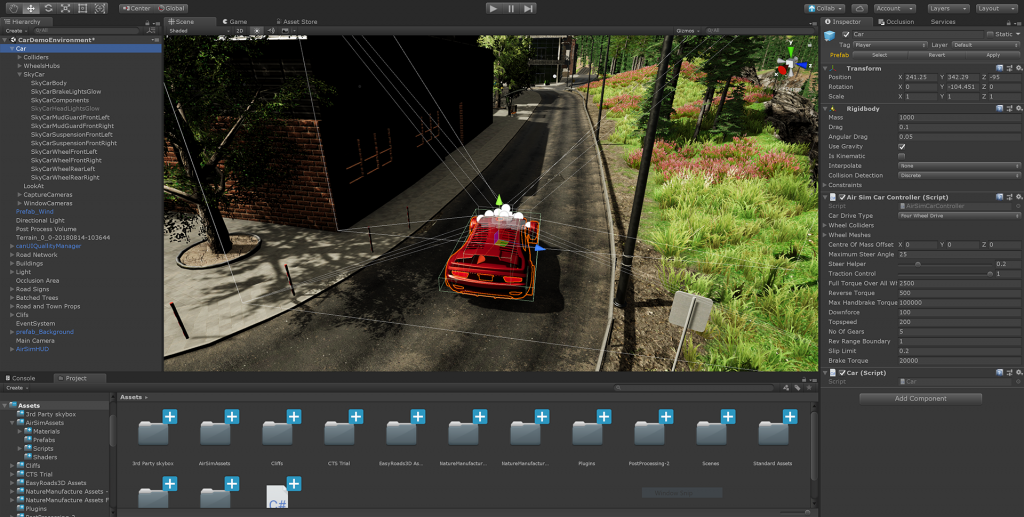
At Microsoft, we have a vision and passion to bring artificial intelligence solutions to real-world systems using the power of simulation. We continually strive to accelerate AI advances with the use of realistic simulators, tools, and environments.
Today we are excited to announce AirSim availability on Unity (opens in new tab). AirSim developers will be able to leverage the Unity platform and ecosystem when building, training and evaluating autonomous systems in a simulated environment designed for AI.
What is AirSim?
Spotlight: On-demand video
AirSim (opens in new tab)is an open-sourced system designed to train autonomous systems. AirSim provides realistic environments, vehicle dynamics, and multi-modal sensing for researchers building autonomous vehicles that use AI to enhance their safe operation in the open world.
Engineers building autonomous systems can create accurate, detailed models of both systems and environments, making them intelligent using methods such as deep learning, imitation learning and reinforcement learning. Tools such as Bonsai (opens in new tab) can be used to train the models across a variety of environmental conditions and vehicle scenarios in the cloud on Microsoft Azure – much faster and safer than is feasible in the real world. After training is complete, designers can deploy these trained models onto actual hardware.
Availability
An experimental version of AirSim on Unity is available now on GitHub (opens in new tab) and you can learn more by visiting the Unity blog (opens in new tab). Learn more about AirSim here (opens in new tab).
We believe that Unity on AirSim represents an important step toward building real world AI solutions using the power, flexibility, and scale of simulators.





